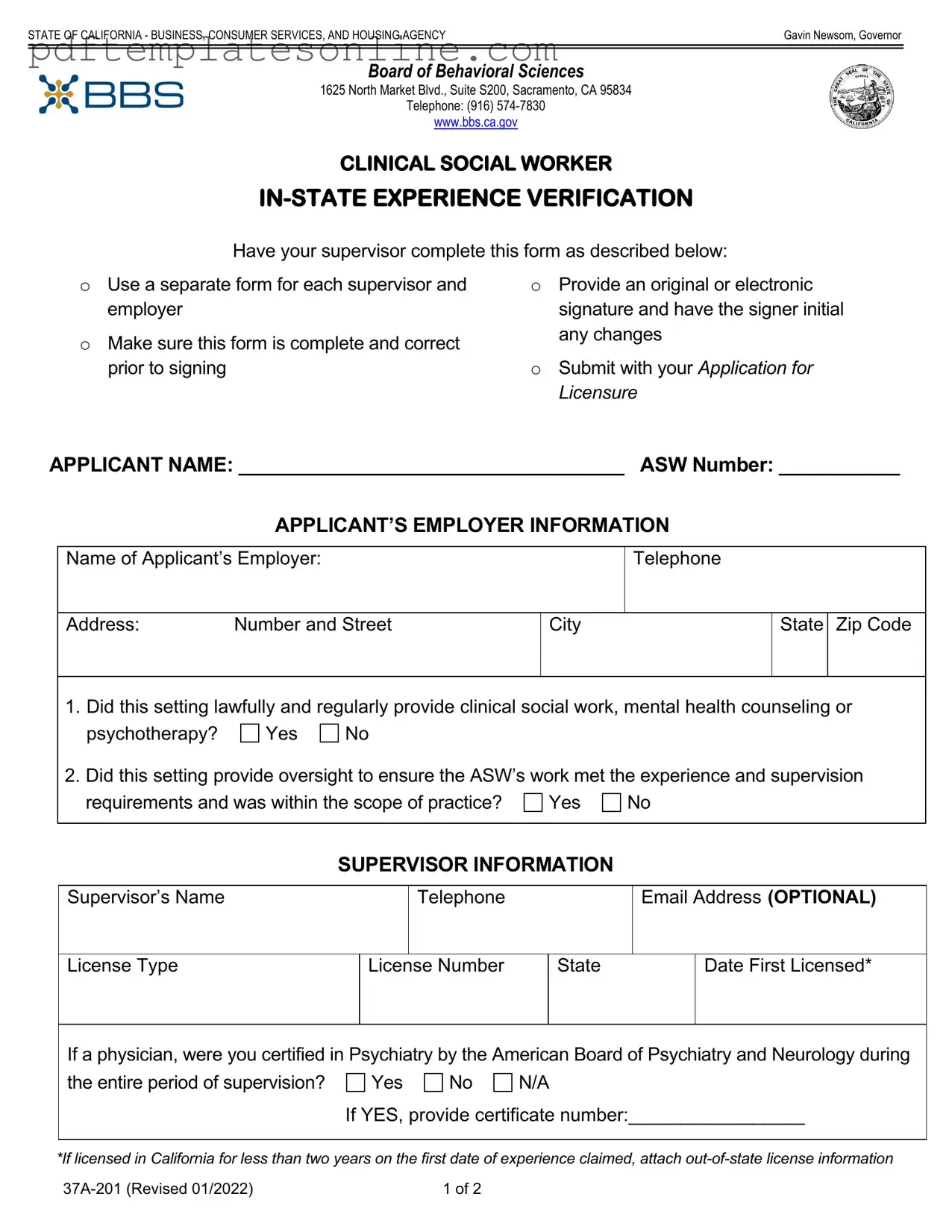Filling out the Clinical Social Experience Verification form can be a straightforward process, but there are common mistakes that applicants often make. One significant error is failing to use a separate form for each supervisor and employer. Each supervisor’s input is crucial for verifying the applicant's experience, and using one form for multiple supervisors can lead to confusion and incomplete information. This oversight can delay the application process and may even result in denial if the necessary details are not adequately documented.
Another frequent mistake involves incomplete or incorrect information. Applicants should ensure that all sections of the form are filled out accurately. Missing details, such as the supervisor’s license number or the exact dates of experience, can raise red flags during the review process. It is essential to double-check all entries before submitting the form to avoid unnecessary complications.
Providing an original or electronic signature is also critical. Some applicants may forget to sign the form or may not have their supervisor initial any changes made after signing. This can lead to the form being considered invalid. Each signature serves as a confirmation of the accuracy of the information provided, and without it, the application may not be processed.
Additionally, applicants often miscalculate their total hours of experience. The form requires specific minimums and maximums for various types of supervision and clinical work. If the hours are not calculated correctly, it could result in the application being rejected. Applicants should take the time to review their hours carefully, ensuring they meet the required criteria.
Finally, many applicants overlook the importance of the supervisor's employment status. The form asks whether the supervisor was employed by the same organization as the supervisee. If the answer is "No," a written agreement regarding oversight must be attached. Failing to provide this documentation can lead to questions about the legitimacy of the supervision, potentially jeopardizing the application.
